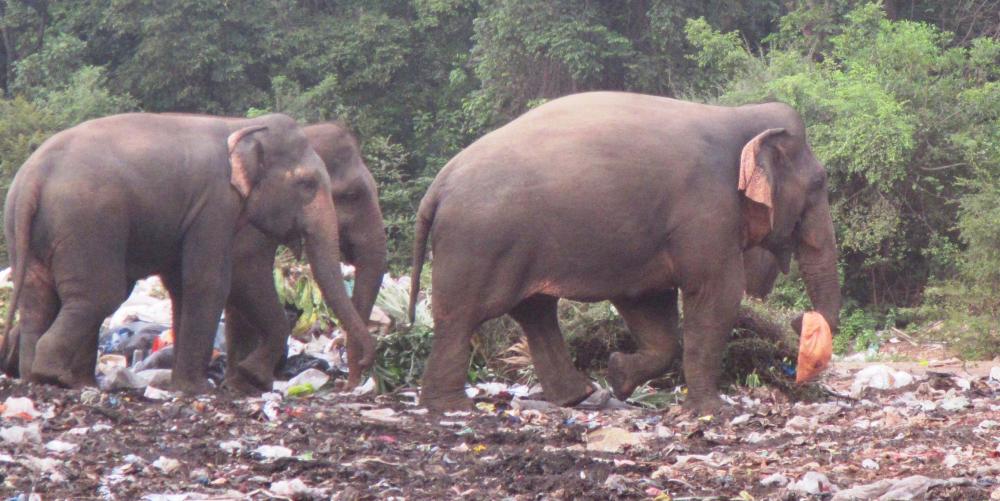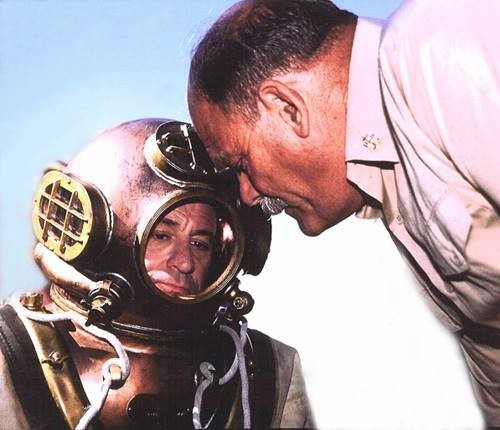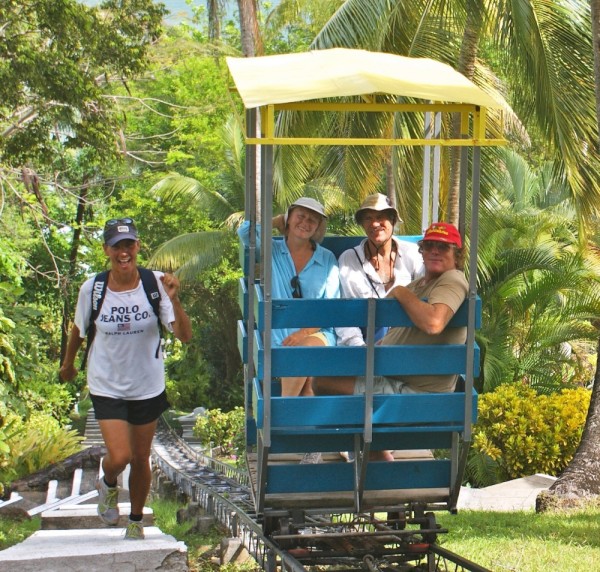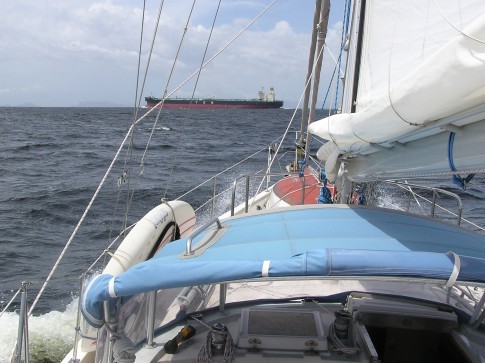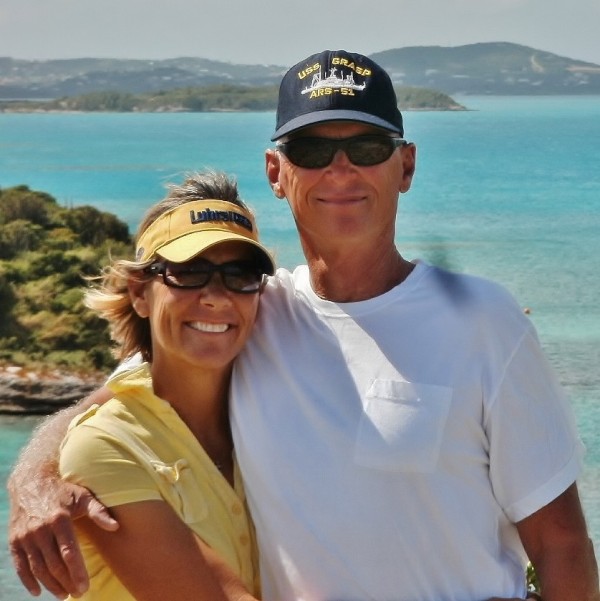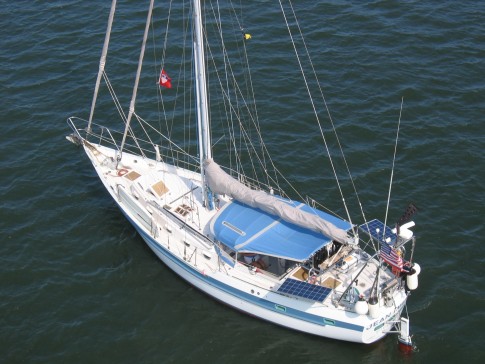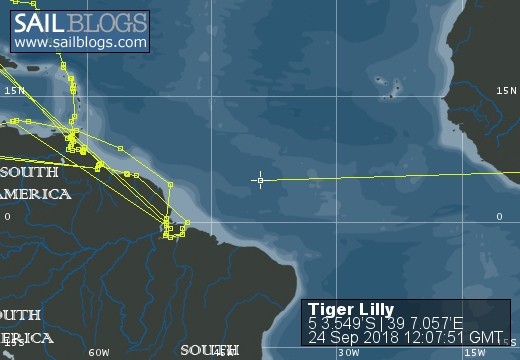
S/V Tiger Lilly
Rig heavy, reef early, and pray often; for God does not assure us an easy passage, but He does promise a safe anchorage...
25 May 2018 | TRINCOMALEE, SRI LANKA
02 January 2018 | Clan Jeti Anchorage, Georgetown, Penang Island, Malaysia
03 November 2016 | Singapore, Southeast Asia
02 October 2016 | Kumai River, Borneo
24 August 2016 | Rindja Island, Indonesia
22 July 2016 | Fannie Bay, Darwin, Northern Territory, Australia
14 June 2016 | Pancake Creek, Queensland, Australia
13 June 2016 | Pancake Creek, Queensland, Australia
11 June 2016 | Burnette Heads, Queensland, Australia
07 June 2016 | Mooloolaba, Queensland, Australia
11 May 2016 | Colmsie, Brisbane River, Queensland, Australia
23 December 2015 | Brisbane, Australia
13 August 2015 | Whangarei, New Zealand
07 August 2015 | Whangarei, New Zealand
23 July 2015 | Whangarei, New Zealand
12 April 2015 | Whangarei, New Zealand
11 February 2015 | Whangarei, New Zealand
25 January 2015 | Whangarei, New Zealand
24 September 2014 | BORA BORA, French Polynesia
23 September 2014 | Bora Bora
TIGER LILLY - CYCLONE SEASON IN NEW ZEALAND
07 August 2015 | Whangarei, New Zealand
Tom & Lilly
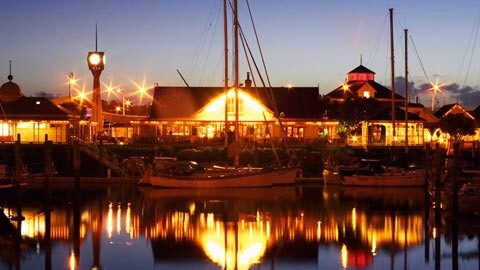
35 43.72S:174 20.06E
Whangarei, New Zealand
A South Pacific cyclone season is both dangerous and unmanageable; from November to April, it is possible to encounter a cyclone anywhere in the tropics. That is why most cruisers leave these dangerous latitudes and head south for the safety of New Zealand. The genuine Kiwi hospitality, cool summer months, and the beautiful greenery of New Zealand are all quite enjoyable. After sailing across the largest ocean in the world, most sailboat cruisers need a place to slow down the pace and spend some time catching up on boat maintenance. With a First World economy, stable government, favorable exchange rate, good logistic support, temperate climate, and Kiwi maritime craftsmanship, New Zealand is just the place.
Unfortunately, too many cruisers are opting to spend cyclone season up in the islands. The reasons for this disturbing trend are varied. Leaving the tropics and heading south for the temperate latitudes requires sailing through an area of the South Pacific which is prone to gales. Although gale force conditions are uncomfortable, it is a manageable situation which any well-found yacht with an experienced crew ought to be able to cope. With the availability of reliable mid-range synoptic weather information, multiple cruiser SSB and HAM nets, and ocean routing services, in all likelihood a weather-window can be utilized to get south safely and comfortably. (Lilly sez: Remember ladies, this man and I have a completely different definition of comfortable. The Love Boat is comfortable, and TIGER LILLY is safe, but I think that ocean passages on cruising sailboats are just to be endured to get to the wonderful destinations - but comfortable they are not!) Last year, most of the yachts sailing to New Zealand did so gale-free. By using Minerva Reef as a stop-over, the passage south can be reduced by about a third, with a corresponding increase in the reliability of the weather-window for the remainder of the passage. What's more, Minerva's magical mid-ocean reef and lagoon is a very special place where only bluewater cruisers visit, and the pristine marine environment is not to be missed. After sailing some 6000 miles across the South Pacific, most Mom and Pop cruisers do not particularly welcome the prospect of another 1100 mile passage to New Zealand; but staying up in the islands is a dangerous gamble which puts our lives and our boat at stake. Last year Cyclone Pam DECIMATED Vanuatu, and in any given year it could happen anywhere in Cyclone Alley. Hanging out in Tonga or Fiji for cyclone season may be easy, but it certainly is not good seamanship. It is a long way from Central America to the Western South Pacific; but finish the job and get your boat and crew south to safety.
"The time for taking all measures for a ship's safety is while still able to do so. Nothing is more dangerous than for a seaman to be grudging in taking precautions lest they turn out to have been unnecessary. Safety at sea for a thousand years has depended on exactly the opposite philosophy." This was what Admiral C.W. NIMITZ, USN had to say after several ships of the United States Pacific Fleet were damaged or sunk - with great loss of life and injury - by a Western Pacific typhoon during World War II.
Last year, while we were still up in Tonga getting ready to head south for the Cyclone Season, we had three main questions about New Zealand: When should we leave? Where in New Zealand should we go? And what will the clearing-in procedure be like?
DEPARTURE FROM THE TROPICS - Officially, the South Pacific Cyclone season runs from 1 November to 30 April each year. It seems as though most of the international boats depart Tonga and Fiji in mid November, so as to be in New Zealand by early December - this strategy is used to maximize the safety factor and avoid an early season cyclone, which historically are rare. However, the Kiwis and Aussies who are returning home and sailing in their own back yard, tend to go later; they claim that the weather settles down a bit in December, making for an enjoyable passage, and still getting them home for Christmas. Having seen both early season and late season hurricanes in the Atlantic in recent years (global warming?) we play our cards pretty close to the vest with respect to active hurricane zones. The timing for this passage involves getting south without catching a spring gale in the temperate latitudes as we approach New Zealand (a wet/cold inconvenience), but not to wait so long that we are exposed to an early season cyclone in the tropical latitudes (a life-threatening situation). As you can imagine there are a lot of theories and ideas on just how to do this - and it seems as though the Internet has created no shortage of weather experts!
We departed Tonga in mid-November and arrived in New Zealand on 28 November, with a brief stop at Minerva Reef to line up with a weather window. We were kept in Tonga longer than we had planned as we waited for our weather window at Big Momma's at Tongatapu. We initially departed Vavau in the northern group of Tonga for North Minerva Reef on 4 November. However, the next morning Gulf Harbour Radio reported that a sub-tropical low was forming to the west of Fiji, and there was a small possibility that it could develop into the season's first cyclone. We were just at the latitude of the southern group of the Tongan Islands when we got this information, and so we elected to play it safe and beat back against the Trades into Tongatapu. (LILLY sez: Thanks for that one Tom-Tom, what a joy it was to beat back and forth right into the boisterous Trades for about 18 hours. After we got anchored it took two days for my stomach and head to get back to a point where they liked each other again!) There were about 30 cruising boats anchored off Big Momma's "Yacht Club" waiting for a window to sail south, and we took the opportunity to have some fun while we waited for the weather; pig roasts, dancing, and general visiting around the Fleet were the order of the day.
It was 16 November before we got our window and headed out the western pass for North Minerva Reef. From Tongatapu it is about 1000 miles to Cape Brett on the North Island of New Zealand. At an average passage speed of 5 knots, that is an 8 day passage - beyond the scope of reliability for a long range weather forecast. However, calling at North Minerva Reef (still in the Tropics / Trades) shortens the distance by 250 miles, and it is a most enjoyable place to stop and wait for a favorable weather window for the 750 mile / 6 day passage to New Zealand. Gulf Harbour Radio (yachties Patricia, a Kiwi, and David, an American meteorologist) provide the cruising fleet with good SSB weather information from their home on the North Island of New Zealand 6 days a week during the cruising season. Tune in to the net at 0715 NZ time (1915 GMT) on 8752 MHZ (8779 MHZ and 8297 MHZ are alternates if there is interference on the primary frequency); Patricia takes the roll call and gets things organized, and then David comes on with a general weather discussion, followed by specific info if requested. Their web site is http://www.yit.co.nz/gulf-harbour-radio for more information, and optional pre-departure registration.
NEW ZEALAND DESTINATIONS - On the east coast of the North Island there are three principal destinations to start your Kiwi sailing experience: the Bay of Islands, Whangarei, and Auckland Harbour. What you want to accomplish while in New Zealand will dictate which arrival port is the best bet for you. The Bay of islands is a beautiful cruising area with the choice of a good marina, and several anchorages. It is a bit remote, but services are available; however, there will not be many choices when selecting vendors or suppliers. Most of the folks that live in this area make monthly shopping trips down to Whangarei. Occasionally, tropical cyclones do threaten the Bay of Islands, but usually they are diminished by the time they get this far south. Whangarei is a town of some 50,000 people well up the Hatea River, and the Town Basin provides all-weather safe shelter for a yacht. (The picture with this blog is the waterfront at Whangarei Town Basin.) Whangarei is one of the best places in the South Pacific to outfit or repair a cruising yacht; making it one of the crossroads of the world for bluewater sailors. The Town Basin Marina is right in the center of town, and most of the vendors, suppliers, and boat yards are within easy walking distance. There are good hiking trails, a public swimming pool with a gym, and easy grocery shopping right next to the Town Basin. The only drawback of Whangarei is that there is no where to anchor within walking distance to town. If you come here it will cost about 490 NZD (350 USD) per month for a pile-set mooring, and almost twice that to be at a floating dock. The Town Basin can only accommodate a limited number of boats, and it quickly fills up in the beginning of the season. If you want to get to work on your boat, it is best to email the marina to let them know you are coming, and to go directly to Whangarei, bypassing the Bay of Islands. By mid-season, as the cruisers start moving around a bit, space will likely become available at the Town Basin. Auckland is a big city, with big marinas, and plenty to do and see - but bring money, because it is expensive. Auckland has an international airport, however Whangarei has inexpensive and convenient daily bus transport to Auckland; they call one of the buses the Naked Bus. LILLY sez: "Tom Tom I am NOT getting on that bus!" No Lilly - it means they only offer the BARE necessities."
The Kiwis enjoy a laid back type of lifestyle, and that aspect of these hospitable people is one of the joys of this pleasant country. December and January is the height of the Southern Hemisphere summer, and most of New Zealand shuts down for about 6 weeks while they go to the beach, camp in the bush, and just generally take it easy and enjoy themselves. (It is hard for hard-charging capitalist Yanks to understand, but that is how it goes down here.) Many businesses are either closed or on reduced hours during the summer holiday period. If you have a time sensitive project, or a major project, it is best to get it started (or at least get your name on their list) before the summer holiday gets going, or it will be well into February before much will happen. Down here, Christmas is not a day, it is a month and a half vacation.
NZ CUSTOMS and IMMIGRATION - Opua Marina in the Bay of Islands, Marsden Cove Marina at the mouth of Whangarei Harbour, and Westhaven Marina in Auckland are all ports of entry for New Zealand. We were concerned about the arrival Customs, Agricultural, and Environmental inspections - but they were easy, fair, and quick. The usual in-water bottom scrub that most cruisers give their boats before they depart the tropics for the passage south meets the marine growth environmental requirements. The list of foods that can not be brought in is well publicized on the NZ government website, and it is easy to simply eat your way out of what is not allowed in. There are no entry fees, and day-night access to free Customs dockage is available at all of these ports of entry. The officials are professional, prompt, and friendly. Immigration gave us an initial entry of 3 months, and a second 3 month extension is easy. If you want to stay beyond 6 months it is doable, but their are some medical requirements necessary (physical exam and chest X-ray). If you come to Whangarei and moor at the Town Basin, when you check in at the Marina ask Sharon for her immigration extension package. It is best to get the process started within the first 2 weeks you are here. New Zealand officialdom is actually a pleasant experience, just don't be French - the Kiwis have not forgotten the 1985 sinking of the Greenpeace boat Rainbow Warrior here in New Zealand by French commandos. The official line is that the French and Kiwi governments have sorted it all out - but the New Zealand people certainly have not. If you have a French passport, or a French boat registration, you might want to consider the south east coast of Australia as a cyclone season destination.
In our next blog we will report some of the specifics on spending a Southern Hemisphere summer in Whangarei doing boat maintenance. We spent the entire season (and then some) here. LILLY sez: OH MY GOSH, we just LOVE New Zealand, and this little town of Whangarei. Come on down and enjoy your cyclone season in hospitable, beautiful, New Zealand!
Whangarei, New Zealand
A South Pacific cyclone season is both dangerous and unmanageable; from November to April, it is possible to encounter a cyclone anywhere in the tropics. That is why most cruisers leave these dangerous latitudes and head south for the safety of New Zealand. The genuine Kiwi hospitality, cool summer months, and the beautiful greenery of New Zealand are all quite enjoyable. After sailing across the largest ocean in the world, most sailboat cruisers need a place to slow down the pace and spend some time catching up on boat maintenance. With a First World economy, stable government, favorable exchange rate, good logistic support, temperate climate, and Kiwi maritime craftsmanship, New Zealand is just the place.
Unfortunately, too many cruisers are opting to spend cyclone season up in the islands. The reasons for this disturbing trend are varied. Leaving the tropics and heading south for the temperate latitudes requires sailing through an area of the South Pacific which is prone to gales. Although gale force conditions are uncomfortable, it is a manageable situation which any well-found yacht with an experienced crew ought to be able to cope. With the availability of reliable mid-range synoptic weather information, multiple cruiser SSB and HAM nets, and ocean routing services, in all likelihood a weather-window can be utilized to get south safely and comfortably. (Lilly sez: Remember ladies, this man and I have a completely different definition of comfortable. The Love Boat is comfortable, and TIGER LILLY is safe, but I think that ocean passages on cruising sailboats are just to be endured to get to the wonderful destinations - but comfortable they are not!) Last year, most of the yachts sailing to New Zealand did so gale-free. By using Minerva Reef as a stop-over, the passage south can be reduced by about a third, with a corresponding increase in the reliability of the weather-window for the remainder of the passage. What's more, Minerva's magical mid-ocean reef and lagoon is a very special place where only bluewater cruisers visit, and the pristine marine environment is not to be missed. After sailing some 6000 miles across the South Pacific, most Mom and Pop cruisers do not particularly welcome the prospect of another 1100 mile passage to New Zealand; but staying up in the islands is a dangerous gamble which puts our lives and our boat at stake. Last year Cyclone Pam DECIMATED Vanuatu, and in any given year it could happen anywhere in Cyclone Alley. Hanging out in Tonga or Fiji for cyclone season may be easy, but it certainly is not good seamanship. It is a long way from Central America to the Western South Pacific; but finish the job and get your boat and crew south to safety.
"The time for taking all measures for a ship's safety is while still able to do so. Nothing is more dangerous than for a seaman to be grudging in taking precautions lest they turn out to have been unnecessary. Safety at sea for a thousand years has depended on exactly the opposite philosophy." This was what Admiral C.W. NIMITZ, USN had to say after several ships of the United States Pacific Fleet were damaged or sunk - with great loss of life and injury - by a Western Pacific typhoon during World War II.
Last year, while we were still up in Tonga getting ready to head south for the Cyclone Season, we had three main questions about New Zealand: When should we leave? Where in New Zealand should we go? And what will the clearing-in procedure be like?
DEPARTURE FROM THE TROPICS - Officially, the South Pacific Cyclone season runs from 1 November to 30 April each year. It seems as though most of the international boats depart Tonga and Fiji in mid November, so as to be in New Zealand by early December - this strategy is used to maximize the safety factor and avoid an early season cyclone, which historically are rare. However, the Kiwis and Aussies who are returning home and sailing in their own back yard, tend to go later; they claim that the weather settles down a bit in December, making for an enjoyable passage, and still getting them home for Christmas. Having seen both early season and late season hurricanes in the Atlantic in recent years (global warming?) we play our cards pretty close to the vest with respect to active hurricane zones. The timing for this passage involves getting south without catching a spring gale in the temperate latitudes as we approach New Zealand (a wet/cold inconvenience), but not to wait so long that we are exposed to an early season cyclone in the tropical latitudes (a life-threatening situation). As you can imagine there are a lot of theories and ideas on just how to do this - and it seems as though the Internet has created no shortage of weather experts!
We departed Tonga in mid-November and arrived in New Zealand on 28 November, with a brief stop at Minerva Reef to line up with a weather window. We were kept in Tonga longer than we had planned as we waited for our weather window at Big Momma's at Tongatapu. We initially departed Vavau in the northern group of Tonga for North Minerva Reef on 4 November. However, the next morning Gulf Harbour Radio reported that a sub-tropical low was forming to the west of Fiji, and there was a small possibility that it could develop into the season's first cyclone. We were just at the latitude of the southern group of the Tongan Islands when we got this information, and so we elected to play it safe and beat back against the Trades into Tongatapu. (LILLY sez: Thanks for that one Tom-Tom, what a joy it was to beat back and forth right into the boisterous Trades for about 18 hours. After we got anchored it took two days for my stomach and head to get back to a point where they liked each other again!) There were about 30 cruising boats anchored off Big Momma's "Yacht Club" waiting for a window to sail south, and we took the opportunity to have some fun while we waited for the weather; pig roasts, dancing, and general visiting around the Fleet were the order of the day.
It was 16 November before we got our window and headed out the western pass for North Minerva Reef. From Tongatapu it is about 1000 miles to Cape Brett on the North Island of New Zealand. At an average passage speed of 5 knots, that is an 8 day passage - beyond the scope of reliability for a long range weather forecast. However, calling at North Minerva Reef (still in the Tropics / Trades) shortens the distance by 250 miles, and it is a most enjoyable place to stop and wait for a favorable weather window for the 750 mile / 6 day passage to New Zealand. Gulf Harbour Radio (yachties Patricia, a Kiwi, and David, an American meteorologist) provide the cruising fleet with good SSB weather information from their home on the North Island of New Zealand 6 days a week during the cruising season. Tune in to the net at 0715 NZ time (1915 GMT) on 8752 MHZ (8779 MHZ and 8297 MHZ are alternates if there is interference on the primary frequency); Patricia takes the roll call and gets things organized, and then David comes on with a general weather discussion, followed by specific info if requested. Their web site is http://www.yit.co.nz/gulf-harbour-radio for more information, and optional pre-departure registration.
NEW ZEALAND DESTINATIONS - On the east coast of the North Island there are three principal destinations to start your Kiwi sailing experience: the Bay of Islands, Whangarei, and Auckland Harbour. What you want to accomplish while in New Zealand will dictate which arrival port is the best bet for you. The Bay of islands is a beautiful cruising area with the choice of a good marina, and several anchorages. It is a bit remote, but services are available; however, there will not be many choices when selecting vendors or suppliers. Most of the folks that live in this area make monthly shopping trips down to Whangarei. Occasionally, tropical cyclones do threaten the Bay of Islands, but usually they are diminished by the time they get this far south. Whangarei is a town of some 50,000 people well up the Hatea River, and the Town Basin provides all-weather safe shelter for a yacht. (The picture with this blog is the waterfront at Whangarei Town Basin.) Whangarei is one of the best places in the South Pacific to outfit or repair a cruising yacht; making it one of the crossroads of the world for bluewater sailors. The Town Basin Marina is right in the center of town, and most of the vendors, suppliers, and boat yards are within easy walking distance. There are good hiking trails, a public swimming pool with a gym, and easy grocery shopping right next to the Town Basin. The only drawback of Whangarei is that there is no where to anchor within walking distance to town. If you come here it will cost about 490 NZD (350 USD) per month for a pile-set mooring, and almost twice that to be at a floating dock. The Town Basin can only accommodate a limited number of boats, and it quickly fills up in the beginning of the season. If you want to get to work on your boat, it is best to email the marina to let them know you are coming, and to go directly to Whangarei, bypassing the Bay of Islands. By mid-season, as the cruisers start moving around a bit, space will likely become available at the Town Basin. Auckland is a big city, with big marinas, and plenty to do and see - but bring money, because it is expensive. Auckland has an international airport, however Whangarei has inexpensive and convenient daily bus transport to Auckland; they call one of the buses the Naked Bus. LILLY sez: "Tom Tom I am NOT getting on that bus!" No Lilly - it means they only offer the BARE necessities."
The Kiwis enjoy a laid back type of lifestyle, and that aspect of these hospitable people is one of the joys of this pleasant country. December and January is the height of the Southern Hemisphere summer, and most of New Zealand shuts down for about 6 weeks while they go to the beach, camp in the bush, and just generally take it easy and enjoy themselves. (It is hard for hard-charging capitalist Yanks to understand, but that is how it goes down here.) Many businesses are either closed or on reduced hours during the summer holiday period. If you have a time sensitive project, or a major project, it is best to get it started (or at least get your name on their list) before the summer holiday gets going, or it will be well into February before much will happen. Down here, Christmas is not a day, it is a month and a half vacation.
NZ CUSTOMS and IMMIGRATION - Opua Marina in the Bay of Islands, Marsden Cove Marina at the mouth of Whangarei Harbour, and Westhaven Marina in Auckland are all ports of entry for New Zealand. We were concerned about the arrival Customs, Agricultural, and Environmental inspections - but they were easy, fair, and quick. The usual in-water bottom scrub that most cruisers give their boats before they depart the tropics for the passage south meets the marine growth environmental requirements. The list of foods that can not be brought in is well publicized on the NZ government website, and it is easy to simply eat your way out of what is not allowed in. There are no entry fees, and day-night access to free Customs dockage is available at all of these ports of entry. The officials are professional, prompt, and friendly. Immigration gave us an initial entry of 3 months, and a second 3 month extension is easy. If you want to stay beyond 6 months it is doable, but their are some medical requirements necessary (physical exam and chest X-ray). If you come to Whangarei and moor at the Town Basin, when you check in at the Marina ask Sharon for her immigration extension package. It is best to get the process started within the first 2 weeks you are here. New Zealand officialdom is actually a pleasant experience, just don't be French - the Kiwis have not forgotten the 1985 sinking of the Greenpeace boat Rainbow Warrior here in New Zealand by French commandos. The official line is that the French and Kiwi governments have sorted it all out - but the New Zealand people certainly have not. If you have a French passport, or a French boat registration, you might want to consider the south east coast of Australia as a cyclone season destination.
In our next blog we will report some of the specifics on spending a Southern Hemisphere summer in Whangarei doing boat maintenance. We spent the entire season (and then some) here. LILLY sez: OH MY GOSH, we just LOVE New Zealand, and this little town of Whangarei. Come on down and enjoy your cyclone season in hospitable, beautiful, New Zealand!
Comments
| Vessel Name: | Tiger Lilly |
| Vessel Make/Model: | 1977 CSY44 walkover hull #55 |
| Hailing Port: | Green Cove Springs |
| Crew: | Lilly and Tom Service |
| About: | |
| Extra: | |
| Social: |
Tiger Lilly's Photos - Main
S/V Tiger Lilly
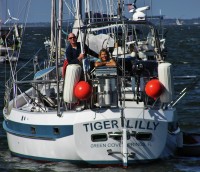
Who: Lilly and Tom Service
Port: Green Cove Springs

